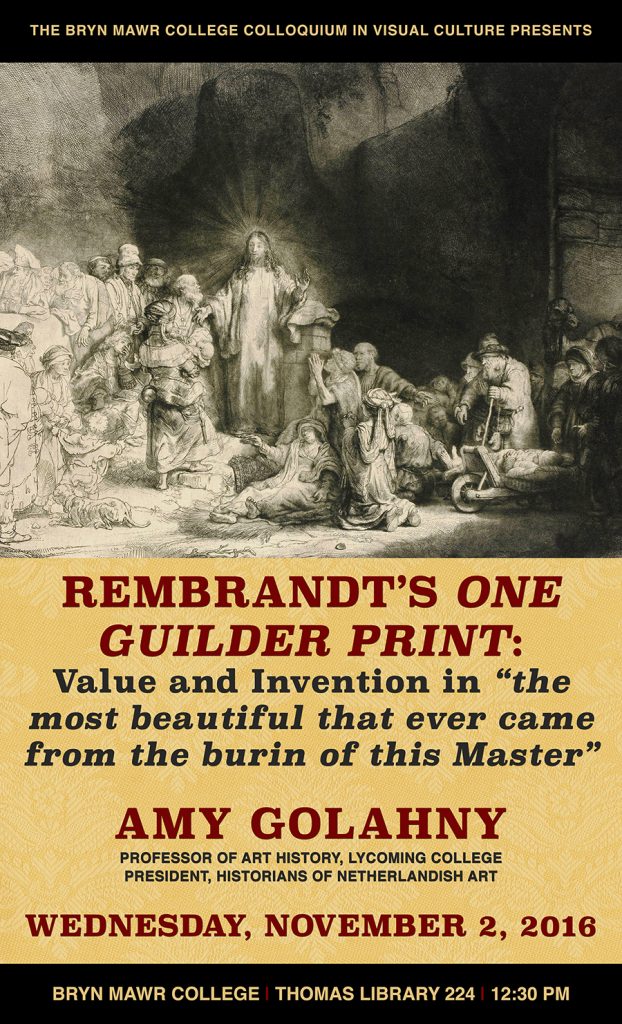Professor of Art History, Lycoming College
President, Historians of Netherlandish Art
Rembrandt’s One Guilder Print: Value and Invention in “the most beautiful that ever came from the burin of this Master”
This essay explores how Rembrandt’s Hundred Guilder Print was conceived to rival and surpass several illustrious inventions by Raphael and Leonardo, and to be equated invalue to prints after Raphael. Value and price are measures of esteem and currency, and in the case of the Hundred Guilder Print, they both converge and diverge. Rembrandt combined a central group of Christ blessing the children and a rebuking apostle, with an unprecedented assembly of the Pharisees, the sick, and the rich man in one frame. This non-linear narrative is generally considered as proceeding from Matthew 19. However, Rembrandt ensured that the print could be given a wide application, for it was copied to illustrate the gospel texts Luke 6:17 and Matthew 8:16 in Melchior Küsel’s Icones Biblicae of 1679. The early reception of the print indicates it was immediately recognized as Rembrandt’s master print. This is a case in which a print, uniquely known by its reputed price, was understood to carry a variety of interpretations from its inception.
Amy Golahny holds the Richmond Chair in Art History at Lycoming College, Williamsport PA, and is currently the president of the Historians of Netherlandish Art. She has lectured and published extensively on and around Rembrandt. Recently she contributed the entry on Pieter Lastman to Oxford Bibliographies in Art History.

